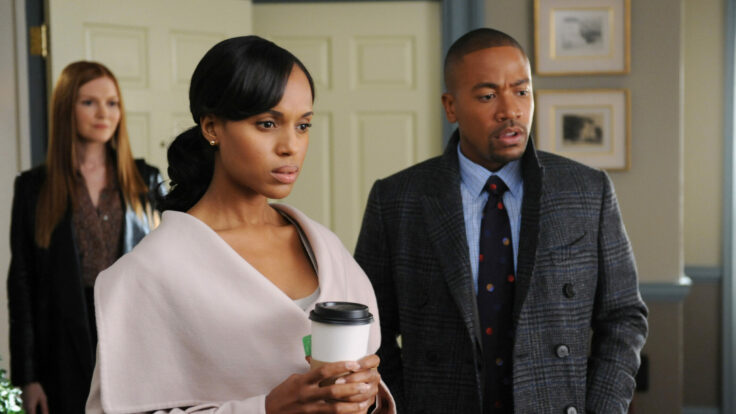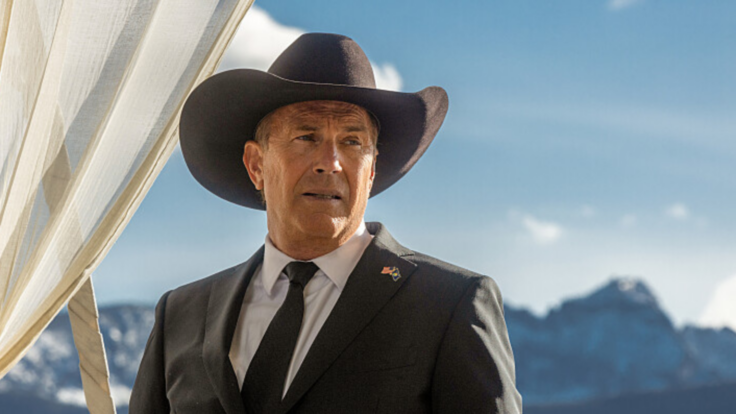“It’s an orgasm of Schadenfreude.” That’s how a veteran producer described to me the feeling around town this week. Hollywood people revel in failures—in a business where nobody knows anything, everyone knows they’re better than the guy who just flopped—but this is different. A Netflix Nosedive, The Great Netflix Correction, a “bitch,” as co-C.E.O. Reed Hastings described the situation at a town hall yesterday, I’m told. Whatever you call it when your growth engine sputters and your stock chart resembles the White Cliffs of Dover. Walking to and from a table at Tower Bar on Tuesday, I was stopped by three separate people I know, all of whom conveyed some variation of “Sucks to be Netflix!” It’s a sickness, people.
And it’s not just the headline news—that Netflix’s first subscriber loss in a decade, and its projection to lose another 2 million subscribers in the next quarter, gruesomely deflated its share price—that is prompting that revelry. Nor is it the fact that Netflix’s market cap has shrunk from $300 billion in November to less than $97 billion. To many, this day was a long time coming.
Because Netflix had swagger. It had sneaked from Los Gatos to Hollywood inside a Trojan horse made of red envelopes and straight-to-series orders, then won 220 million paying acolytes. Hastings, co-C.E.O. Ted Sarandos, and the algorithm behind the curtain declared they knew better than everyone else. Netflix, and only Netflix, could successfully go direct-to-consumer, overpaying the best artists to work at the company, all while eliminating the backends that made them truly rich. Netflix, and only Netflix, could use data, not silly executive taste, to select the right projects, even though nobody remembers most of them 10 minutes after watching. Netflix, and only Netflix, could delight the customer by dropping all episodes at once, rather than stringing them along (and, incidentally, keeping them subscribed) week-to-week. Netflix, and only Netflix, could avoid accountability by refusing to disclose meaningful consumption data, then convincing the media to cover self-serving “reveals” as news. And, of course, Netflix, and only Netflix, could scale the business globally by running up huge debts, and make traditional Hollywood (with its theatrical windows and syndication sales and profit margins) seem downright analog in the process.
That turned out to not be true, of course, which is why this feels so cathartic for so many people. For every executive who has lost a bidding war because Netflix paid a stupid price and promised a creator stupid freedom, even when that creator—be it Ryan Murphy, or Judd Apatow, or Kenya Barris, or whoever—pretty clearly needed creative supervision. For every showrunner whose series was canceled after a season or two because it’s not “efficient.” For all the studios that lost great people when Netflix offered to double salaries. Or for all the good employees who were shown the door because their boss was forced to apply a ridiculously subjective “keeper test.” And don’t forget the marketers who tried to rent L.A. billboards, only to find that Netflix hadn’t just reserved the good ones, it bought the entire billboard company.
Yeah, that’s why people are celebrating. But here’s the truth: none of that stuff is Netflix’s fault. The $17 billion in annual content spend, the firehose creative strategy, the soul-crushing culture, the entire philosophy of business—Wall Street made that happen. Wall Street identified Netflix as the key disruptor, the first major mover in subscription streaming. And Wall Street lavished on Netflix a rocketing share price that enabled it to load up on debt and spend without consequence. That allowed Hastings and Sarandos not just to shoot for total domination, but also to dictate strategy to the entire industry, to change decades-old business practices, to muscle Netflix into the M.P.A., to collect huge personal salaries and write the management-advice book and go ahead and buy the Montecito property.
Netflix is only crashing now because it never should have been run up in the first place. Everyone in Hollywood (even Reed and Ted, I’m pretty sure) always knew that. It was the investors who didn’t seem to realize that the legacy shops would soon get their acts together, and that the economics of streaming would not match cable television, at least not for a long time. It was the analysts who probably knew better, but cheerleaded them anyway (and who now, hilariously, are pivoting from “Are you all in on streaming?” to “Are you fully diversified?”). And it was the rest of the industry that happily took the checks and ingested the red-N Kool Aid.
The public markets have always been an insidious force in the creative industries, the cause of so many short-term decisions and long-term problems: AOL-Time Warner, Universal-Vivendi, Viacom under the corporate looter Philippe Dauman, even what’s going on right now between Twitter and Elon Musk. Yes, Netflix encouraged the narrative that scale in streaming would lead to a Shangri-La of 1 billion people all paying $15 a month to watch The Rock plug his tequila in Red Notice. But only Wall Street made that narrative real. And then everyone else chased it.
So now it’s not real, or at least it’s severely curtailed. Sure, the Russia pullout, plus inflation, and post-pandemic malaise are factors. But this is not a blip; Netflix must deal with a new normal: Traditional studios, with their diversified businesses and troves of I.P., are suddenly “better-positioned,” though their stocks also took a hit this week, thanks to the Netflix shrapnel. Netflix is officially “challenged,” at least until it can either figure out how to restart growth, or go “horizontal” with new businesses like gaming or consumer products or theme parks, all of which are in various stages of development. Or, perhaps, sell or merge itself.
Until then, Netflix has officially pressed the panic button. In its Tuesday investor call, Hastings deployed ads and a password crackdown, while declaring to the talent community that, essentially, the party’s over. (It’s actually been over for a while now. Talent deals got markedly worse last year, according to dealmakers I talk to, and now Netflix is moving to flat fees for producers, rather than percentages of budgets, per the Journal.) Inside Netflix, the mood is pretty grim, according to people I’ve talked to. So many employees now have upside-down options.
But is it actually time to panic? Probably not. Don’t get me wrong, it’s pretty clear now that Netflix made some strategic errors:
-Yes, it was a mistake to let password-sharing run rampant. I never understood why a business built exclusively on subscription would encourage free riders. Now, though, those freeloaders have been trained. It’s like when news publishers decided in the late ‘90s that journalism should be free online; the industry still hasn’t recovered. Now, if 100 million households are indeed getting Netflix for free, transitioning even a quarter of them to paid subs (while not alienating existing members) will help reverse the slide, but that is no small feat.
-Yes, Netflix should have used its inflated stock price to buy a traditional studio. It could have had MGM, and its library and franchises, for the $8.5 billion that Amazon paid, which is a fraction of that peak market cap. Lionsgate, Sony Pictures—both would have significantly boosted the content offering that Hastings complained about in his shareholder letter. Now that’s not really an option.
-No, the “binge” model is not ideal for retaining subscribers. Netflix still insists the all-at-once strategy doesn’t impact subscriber churn. But who believes that? As HBO’s Casey Bloys noted a few months ago, “You leave a lot on the table when you release all the episodes at once.”
-Yes, Netflix should be syndicating its library shows to generate extra cash, just like traditional networks and studios do. Netflix has dabbled here, but it’s a big revenue pot that hasn’t been exploited because the service has been so adamant about exclusivity. One dealmaker says Netflix is indeed now asking for more platform freedom in deals, meaning the shows can be licensed elsewhere. (This freedom would also help Netflix if the company is sold, which is also intriguing…)
-No, the movies aren’t good enough, given how much they spend. Film chief Scott Stuber basically acknowledged that months ago, saying he wants to make fewer, better films. That line has become a punchline around town.
-No, the television strategy isn’t perfect. TV chief Bela Bajaria had a huge, industry-changing hit in Squid Game. But she’s pretty open about wanting to make populist, “lean-back” shows for a global audience. The problem is, Netflix is making lean-back shows for a streaming product that is priced as a “lean-in” experience—meaning it’s expensive. Premium pricing for non-premium programming doesn’t lead to satisfied customers.
That brings us to the biggest panic-shift here: the advertising tier, which is coming in a year or two, per the somewhat hasty announcement made by Hastings during the earnings call. Internally, Netflix had been telegraphing to employees last week that the numbers weren’t good (hence why I was able to alert readers that this was coming in last Thursday’s email). But many were still surprised by the ad pivot, which I’m told came after long discussions with the Netflix board and in executive strategy sessions. It was a heated debate.
What wasn’t revealed, and what I don’t think Netflix has figured out: How the heck is this going to work? Ad businesses are really difficult to launch, especially at companies that have shown no interest or expertise in them. And we know Hastings didn’t really want to do this because he told us dozens of times. He always considered it an unnecessary distraction from his simple mission: pleasing customers. Netflix insiders say the shift is a sign of his pragmatism, that the climate has changed and the company needs to be responsive to what consumers want (a lower-cost alternative), especially in developing markets. Okay… But the reality is that Hastings is essentially holding his nose and jumping into a freezing lake because his peers are all doing it.
The new thinking—the thinking that has completely changed the calculus in executive suites— is that nobody is reaching subscriber Shangri-La without either an ad-supported tier or a free, ad-supported service like Tubi, Pluto TV, or Amazon’s unfortunately named Freevee. But I’d offer another way to get there: Consolidation, of course. Some of these services need to go away or merge, reducing competition. Or bundles. Whoever cracks the code of offering 4 or 5 top-tier streaming services, including all the sports, for $80 to $100—about what the average American currently pays for video—will win this game.
Netflix will certainly be in the mix of those top-tier streamers. With 220 million customers and an innovative management team, how could it not? But whether Netflix will be the dominant player is now anyone’s guess. And that changes everything.

















